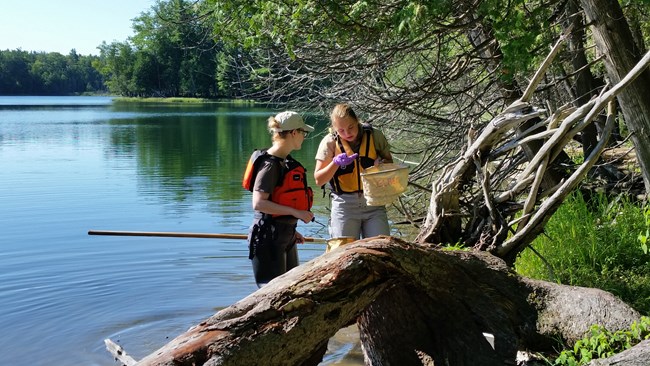
NPS
Mercury emissions to the atmosphere come from both natural and human sources. Once in the air, mercury can travel great distances and is deposited on land and in water by way of rain, snow, and dust particles. In the environment, mercury undergoes a complex transformation to become methylmercury, which is toxic to all forms of life.
There are also many things we do in the course of a day that contribute to the contamination of lakes and streams. Every-day chemicals such as medications, insect repellent, and personal care products that go down the sink drain are known as contaminants of emerging concern.
Long-term Monitoring
Our contaminants monitoring program has evolved from tracking six different contaminants using tissues of indicator species (bald eagle nestlings and fish), to focusing on mercury in dragonfly larvae. In this, we are part of a nationwide monitoring program coordinated by the NPS Air Resources Division. We are also monitoring contaminants of emerging concern in water samples.
Our partner:
Last updated: September 11, 2024
